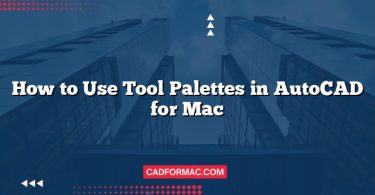External references—commonly known as Xrefs—are a cornerstone of efficient drafting and collaboration in AutoCAD. They allow users to link drawings into a host file without embedding the data, enabling modular design workflows and easier updates. While the core functionality of Xrefs remains consistent across platforms, there are notable differences in how they are managed between AutoCAD for Mac and AutoCAD for Windows. Understanding these distinctions is essential for professionals working in cross-platform environments or transitioning between operating systems.
Core Xref Functionality: What’s the Same?
Before diving into the differences, it’s important to recognize that both AutoCAD for Mac and Windows share the same foundational Xref capabilities:
- Attachment and Overlay Options: Both platforms support attaching (full reference) and overlaying (lightweight reference) external drawings.
- Path Types: Full, relative, and no path options are available on both systems.
- Reference Editing: Users can edit Xrefs in-place using the
REFEDITcommand. - Layer Control: Xref layers can be frozen, turned off, or set to different properties in the host drawing.
- Clipping: Both versions support clipping Xrefs to display only a portion of the referenced drawing.
These shared features ensure that workflows remain largely compatible, regardless of platform.
Key Differences in Xref Management
1. User Interface and Navigation
Windows:
AutoCAD for Windows offers the External References palette (XREF command), a dockable panel that provides a tree-view hierarchy of all Xrefs, their status, path types, and nested references. Right-click context menus offer quick access to common actions like reloading, unloading, binding, and editing paths.
Mac:
AutoCAD for Mac uses the External References Manager, accessible via the Insert menu or the XREF command. While it displays similar information, the interface is more dialog-box–oriented and less customizable. The Mac version lacks the dockable, resizable palette found in Windows, which can make managing large numbers of Xrefs slightly less intuitive.
Tip: On Mac, use the Navigator panel (View > Palettes > Navigator) to access a simplified Xref tree, though it doesn’t offer the same depth of control as the Windows palette.
2. Path Management and File Browsing
Windows:
The Windows version integrates seamlessly with the native file browser, allowing drag-and-drop insertion of Xrefs and easy path editing through a familiar Explorer-style dialog. Relative path handling is robust, especially when working with network drives or project folders.
Mac:
AutoCAD for Mac uses macOS-native file dialogs, which behave differently—especially regarding relative paths and network volumes. Users sometimes report challenges with maintaining consistent relative paths when moving projects between machines, particularly if folder structures differ.
Best Practice: On Mac, always verify path types after moving drawings. Use the Find and Replace Path tool in the External References Manager to update multiple paths at once.
3. Performance with Large or Nested Xrefs
Both platforms handle Xrefs efficiently, but Windows generally offers better performance with complex, nested reference structures—especially on high-end workstations with dedicated GPUs. AutoCAD for Mac, while optimized for Apple hardware, may experience slower redraws or longer load times with deeply nested Xrefs, particularly on older Mac models.
4. Command-Line and Scripting Support
Windows:
Full support for LISP, .NET, and VBA allows for advanced automation of Xref tasks (e.g., batch reloading, path standardization). Third-party plugins often enhance Xref management further.
Mac:
AutoCAD for Mac supports AutoLISP and Visual LISP, but does not support VBA or .NET APIs. This limits the availability of third-party tools for Xref automation. Users relying on custom scripts may need to adapt or simplify their workflows on Mac.
5. Handling of Missing or Unresolved Xrefs
Both versions alert users to missing references at drawing open, but the resolution workflow differs:
- Windows: The External References palette highlights missing files in red and provides a “Browse” button to locate them.
- Mac: The External References Manager shows a warning icon and requires manual path reassignment through a file dialog. There’s no “Find and Replace” option directly in the missing file alert.
Here’s a clear, side-by-side comparison table highlighting the key differences and similarities in Xref (External Reference) management between AutoCAD for Windows and AutoCAD for Mac:
| Feature / Aspect | AutoCAD for Windows | AutoCAD for Mac | |
|---|---|---|---|
| Xref Manager Interface | Dockable External References palette (XREF) with tree view, icons, and right-click context menus. |
Modal External References Manager dialog; less visual, more list-based. No dockable palette. | |
| Access Method | XREF command, Insert tab > Reference panel, or right-click in drawing. |
XREF command or Insert menu > External References Manager. |
|
| Path Types Supported | Full, Relative, No Path | Full, Relative, No Path | |
| Path Editing | Edit paths directly in palette; Find and Replace Path tool available. | Edit paths via dialog; Find and Replace Path available in Manager (since 2021+). | |
| File Browser Integration | Windows Explorer-style dialog; drag-and-drop Xref insertion supported. | macOS-native file dialog; drag-and-drop not supported for Xref insertion. | |
| Relative Path Reliability | Highly reliable, especially with network/project folders. | Can be less consistent; sensitive to folder structure changes on macOS. | |
| Nested Xref Display | Clear hierarchical tree view showing nesting levels. | Shows nesting, but interface is less intuitive for deep hierarchies. | |
| Missing Xref Handling | Missing files highlighted in red; one-click “Browse” to locate. | Missing files marked with warning icon; manual path reassignment required. | |
In-Place Editing (REFEDIT) |
Fully supported with robust interface. | Supported, but interface is simplified; fewer editing tools visible. | |
| Xref Clipping | Supported (XCLIP); graphical and command options. |
Supported (XCLIP); same functionality. |
|
| Layer Control for Xrefs | Full control via Layer Properties Manager; Xref layers prefixed automatically. | Same layer control; layers appear with standard Xref prefix (e.g., `FILENAME | LAYER`). |
| Performance with Large Xrefs | Generally faster, especially on high-end PCs with GPU acceleration. | May be slower on complex drawings; performance varies by Mac hardware (M1/M2/Intel). | |
| Automation & Scripting | Supports AutoLISP, VBA, .NET, and third-party plugins for Xref automation. | Supports AutoLISP only; no VBA or .NET; limited third-party automation tools. | |
| Batch Operations | Reload, detach, or bind multiple Xrefs at once via palette. | Limited batch actions; most operations are one-at-a-time in dialog. | |
| Cloud/Network Path Support | Excellent support for UNC paths, OneDrive, BIM 360, Autodesk Docs. | Supports cloud paths, but may require additional authentication or mapping on macOS. |
Summary of Key Takeaways:
- Windows offers a more powerful, customizable, and efficient Xref workflow, especially for complex projects and automation.
- Mac provides core Xref functionality but with a simplified interface and fewer advanced tools, which may impact productivity in large-scale or collaborative environments.
- Both platforms support essential features like clipping, layer control, and path types—but workflow smoothness differs due to UI and OS integration.
Recommendation: For teams using both platforms, standardize folder structures, use relative paths, and avoid platform-specific automation to ensure seamless Xref collaboration.
Practical Tips for Cross-Platform Xref Workflows
- Standardize Folder Structures: Keep project folders identical across machines to ensure relative paths work on both Mac and Windows.
- Use Relative Paths: Avoid absolute paths unless necessary, especially in collaborative environments.
- Audit Before Sharing: Use
XREF> Audit (Windows) or Check References (Mac) to verify all paths before sending drawings to colleagues on another platform. - Avoid Platform-Specific Fonts or Plot Styles: While not directly Xref-related, these can cause display inconsistencies that affect referenced content.
- Test Nested Xrefs: If your project uses multiple levels of Xrefs, test the full hierarchy on both platforms to catch performance or path issues early.
FAQ: Xrefs in AutoCAD Mac vs. Windows
Q1: Can I open a drawing with Xrefs created on Windows in AutoCAD for Mac (and vice versa) without issues?
A: Yes—in most cases, drawings with Xrefs are fully compatible between platforms. However, path discrepancies are the most common issue. If absolute paths (e.g., C:\Projects\...) were used on Windows, AutoCAD for Mac won’t find them. Always use relative paths and maintain identical folder structures across machines to avoid broken references.
Q2: Why do my Xref layer names look different on Mac compared to Windows?
A: They shouldn’t—AutoCAD uses the same naming convention (FILENAME|LAYERNAME) on both platforms. If you see inconsistencies, it may be due to font substitution, corrupted layer states, or third-party plugins on Windows that alter layer handling. The core Xref layer prefix behavior is identical.
Q3: Does AutoCAD for Mac support Xref fading or transparency like Windows?
A: Yes. Both platforms support Xref fading via the XDWGFADECTL system variable (default value: 0 = no fade, up to 90 = strong fade). Transparency can also be applied to Xref layers using the Transparency column in the Layer Properties Manager on both Mac and Windows.
Q4: Can I use Autodesk Docs (formerly BIM 360) to manage Xrefs consistently across Mac and Windows?
A: Yes—and it’s highly recommended. When Xrefs are stored in Autodesk Docs, both AutoCAD for Mac and Windows can reference them using cloud-based paths, eliminating local path issues. Just ensure all users have proper folder permissions and are signed into the same Autodesk account.
Q5: Why can’t I drag a DWG file from Finder into AutoCAD for Mac to attach it as an Xref?
A: Unlike Windows (where dragging from File Explorer into AutoCAD attaches an Xref), macOS does not support drag-and-drop Xref insertion. You must use the External References Manager or the XREF command to attach files manually. This is a platform limitation, not a missing feature.
Q6: Are Xref binding results the same on Mac and Windows?
A: Yes. When you bind an Xref (convert to block or insert), the resulting objects, layers, and properties are identical on both platforms. However, note that Mac does not support the “Insert” binding option in older versions (pre-2022); ensure you’re using a recent version for full parity.
Q7: Can I use the same LISP routine to manage Xrefs on both Mac and Windows?
A: Mostly yes—if your LISP routine uses only standard AutoLISP functions (e.g., (xref), (command "_xref" ...)). However, routines that rely on Windows-specific file dialogs, VBA, or ActiveX will fail on Mac. Test your scripts on both platforms and avoid OS-dependent calls.
Q8: Does AutoCAD for Mac support Xref circular reference detection?
A: Yes. Both versions detect and warn about circular references (e.g., Drawing A references Drawing B, which references Drawing A). The alert appears when opening the file or reloading Xrefs, regardless of platform.
Q9: Why does my Xref take longer to reload on Mac than on Windows?
A: This can be due to several factors:
- macOS file system caching behavior
- Slower I/O performance on some Mac storage configurations
- Lack of GPU acceleration for certain redraw operations in AutoCAD for Mac
Optimize by storing Xrefs on fast SSDs and minimizing deeply nested references.
Q10: Can I use the Sheet Set Manager with Xrefs on AutoCAD for Mac?
A: No. The Sheet Set Manager (SSM) is not available in AutoCAD for Mac. Since sheet sets often rely heavily on Xrefs, Mac users must manage drawing sets manually or use alternative project organization methods. This is one of the most significant workflow gaps between the two platforms.
Conclusion
While AutoCAD for Mac and Windows deliver the same essential Xref functionality, differences in interface design, path handling, automation support, and performance can impact workflow efficiency—especially in mixed-platform teams. By understanding these nuances and adopting consistent file management practices, users can ensure smooth, reliable Xref collaboration regardless of their operating system.
As Autodesk continues to align feature sets between platforms, many of these gaps are narrowing. However, for now, awareness and adaptation remain key to mastering Xrefs across AutoCAD’s Mac and Windows ecosystems.




